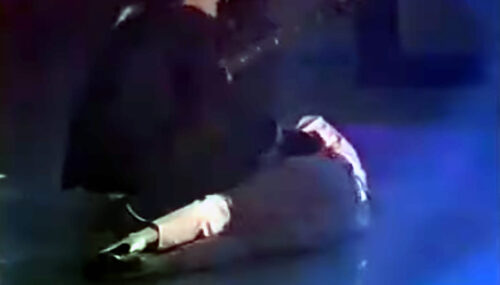photo: ORF
We can not wait for the Eurovision Song Contest in Malmö. Therefore, we have a closer look at one of the contestants every day. Today: Austria.
Kaleen
Kaleen, whose real name is Marie-Sophie Kreissl, was born in 1994 in Austria. She loves dancing, choreographing dances, and singing. Even when she was very young, she enjoyed watching music shows and dancing in her living room. She started learning ballet when she was a little girl and soon learned many other types of dance like jazz, tap, and even Latin dances.
Kaleen was really good at dancing from the start. She won her first big dance competition when she was just seven years old. Over the years, she won more than 100 competitions in Austria and Europe, and she even won five world championships. That’s a lot of wins!
In 2018, Kaleen started working with the Eurovision Song Contest. She first joined as a stand-in lead artist and choreographer, helping to create dances for the show. Kaleen is also very talented in music. In 2021, she released her very first song that she made all by herself, and in 2023, she put out her first album called “Stripping Feelings.”
Kaleen didn’t stop there. By 2021, she became the creative director for the Junior Eurovision Song Contest for Spain and Bulgaria. She was in charge of the stage for the 2022 contest in Spain and helped Austria, Armenia, Germany, and Georgia with their performances for the contest in Liverpool in 2023.
On January 16, 2024, it was announced that Kaleen will be the one to represent Austria in the Eurovision Song Contest. She has come a long way from dancing in her living room to performing on one of the biggest music stages in the world!
How Austria selects a song
ÖRF (Österreichischer Rundfunk) does not have a tradition of national finals. The majority of the Austrian entries have been selected internally. The first time the Austrian song was selected by a national final was in 1981, but still Marty Brem was the only contestant. A year later, the first national final, with 12 competitors, was a fact. The last time was in 2016.
One national final we cannot deny was the one of 1990; the contest was won by the duo Duett, singing “Das Beste”. Half way through the performance, Duett-singer Monika fainted and fell on the floor. Duett was allowed to sing the song again, and guess what: they won. However, the song already competed in a German semifinal 2 years before and was disqualified for that. In the end it was Simone who represented the country with “Keine Mauern mehr”.


Duett, with Monika who fainted during her performance.
Austria in the Eurovision Song Contest
It was Bob Martin who brought Austria to the Eurovision Song Contest in 1957. After two failed attempts, Udo Jürgens won the trophy in 1966 with “Merci Cherie”. The country took several breaks, had some top-5 positions but finally won again in 2014, when Conchita Wurst presented her “Rise like a Phoenix”. Conchita brought Austria on the map again. Already 4 years later, César Sampson won the jury vote. His “Nobody but you” became 3rd overall.

Conchita Wurst; Albin Olsson, Wikimedia Commons
The Bookmakers
A new success for Austria is a serious option: Kaleen is currently 10th in the betting odds for Eurovision win. In the odds for making it through the final, she has an 8th place. Conclusion: as soon as she is in the final, she will make it there.
The song
This is the song:



